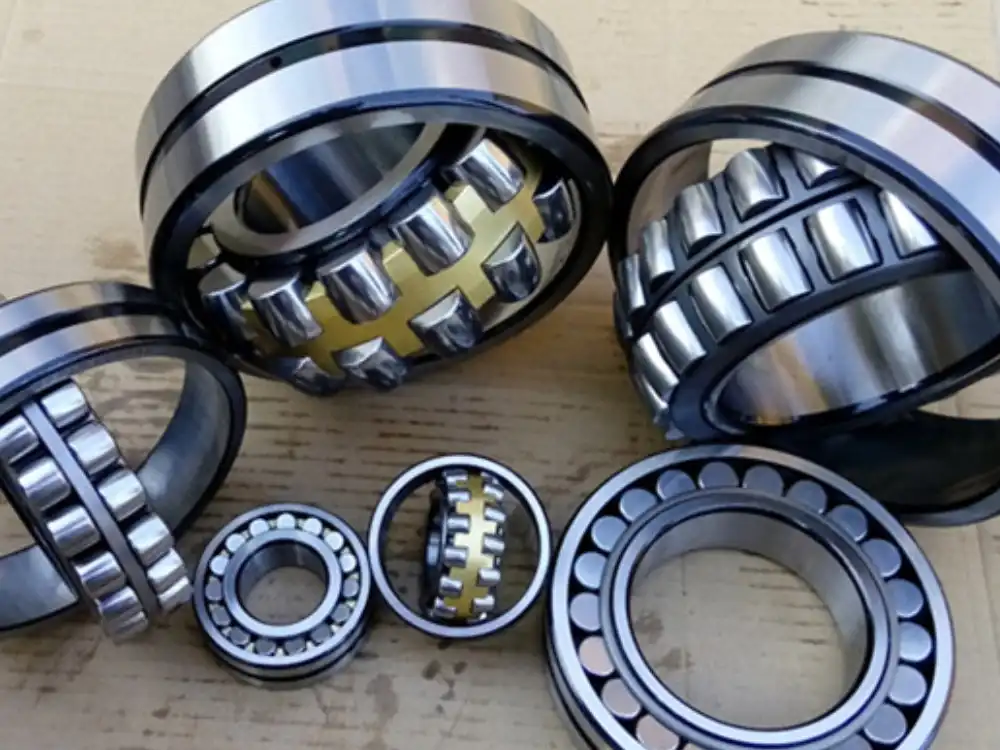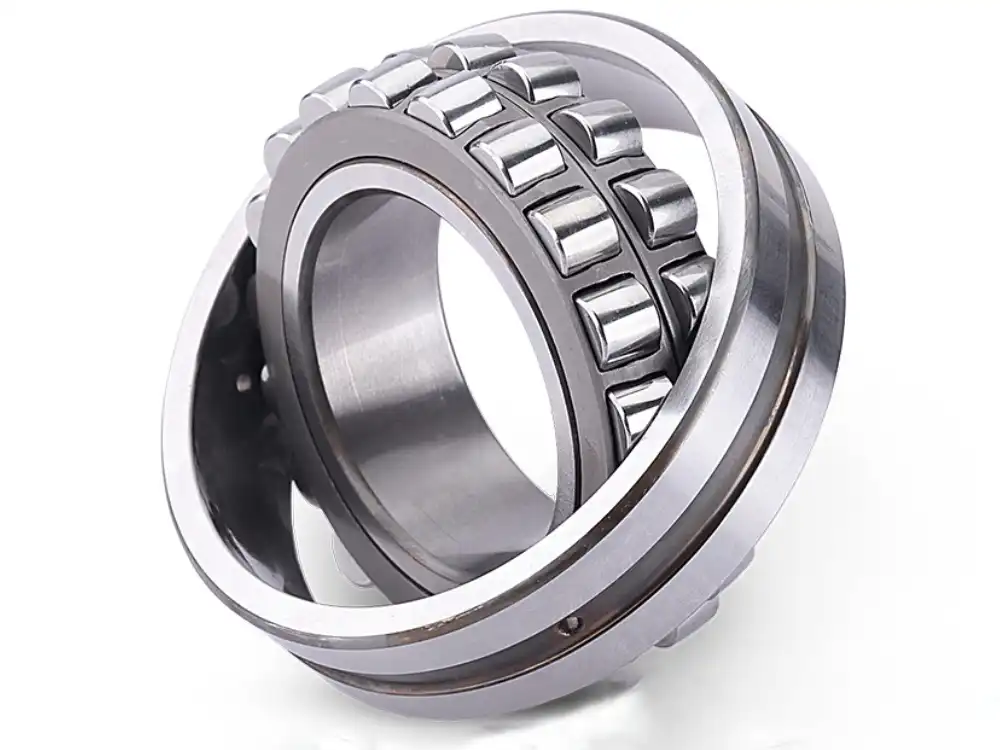What are the Applications of Self-Aligning Tapered Roller Bearings
Self-aligning tapered roller bearings combine the high load capacity of tapered roller bearings with self-aligning capabilities typically found in spherical roller bearings. These specialized components accommodate misalignment while maintaining excellent load-bearing performance, making them valuable in numerous industrial applications. Their design allows automatic adjustment to shaft deflections and housing deformations, reducing stress on the bearing and extending service life in challenging environments.
What makes self-aligning tapered roller bearings different from conventional bearings?
The unique structural advantages of self-aligning tapered roller bearings

Self-aligning tapered roller bearings feature an innovative design with an outer ring that has a spherical raceway. This design allows the rollers and inner ring assembly to rotate around the bearing's central axis, accommodating angular misalignment up to 1.5 degrees without increasing friction or reducing bearing life. The tapered rollers are arranged at an angle to the bearing axis, enabling these bearings to handle both radial and axial loads simultaneously. Self Aligning Tapered Roller Bearing components typically include an outer ring with a spherical raceway, an inner ring with tapered raceways, tapered rollers, and a cage that maintains proper roller spacing. This structure ensures that even when the shaft and housing aren't perfectly aligned, the bearing can adjust automatically to distribute the load evenly across all rollers.
Performance comparison between self-aligning tapered roller bearings and other bearing types
Self Aligning Tapered Roller Bearings offer several advantages over other bearing types. Unlike standard tapered roller bearings, the self-aligning variant maintains optimal performance even under misalignment conditions. Compared to spherical roller bearings, the tapered roller design provides better axial load handling and precise shaft guidance. The contact angle of the tapered rollers creates an ideal geometry for managing thrust loads more efficiently than spherical designs. Deep groove ball bearings cannot compete with Self Aligning Tapered Roller Bearings in heavy load capacity applications, particularly with combined loads. The tapered contact geometry provides approximately 30-40% higher load ratings compared to similarly sized ball bearings. Additionally, Self Aligning Tapered Roller Bearings demonstrate superior resistance to shock loads and vibration compared to cylindrical roller bearings.
How the self-aligning feature enhances bearing performance in various operating conditions
The self-aligning feature significantly enhances performance across diverse operating conditions. In environments with temperature fluctuations, Self Aligning Tapered Roller Bearings compensate for thermal expansion and contraction that might otherwise create misalignment. This self-adjustment capability prevents edge loading by distributing force evenly across the entire roller length, achieving up to 40% longer service life in misaligned applications. In vibration-intensive operations, these bearings absorb and adjust to dynamic misalignments, reducing noise and wear. For equipment on uneven foundations, Self Aligning Tapered Roller Bearings accommodate housing deformations without transferring stresses to the rolling elements. This adaptability is particularly valuable in mining, construction, and agricultural equipment, where operating conditions are rarely ideal and bearing replacement is costly.
What industries benefit most from self-aligning tapered roller bearings?

Applications in heavy machinery and industrial equipment
Heavy machinery and industrial equipment represent key application areas for Self Aligning Tapered Roller Bearing technology. In steel mills, these bearings excel in continuous casting machines and rolling mills where they withstand extreme loads and temperatures. Their self-aligning capability ensures reliable operation even when thermal expansion causes structural shifts. In mining operations, Self Aligning Tapered Roller Bearings serve in crushers and conveyors, where they endure severe shock loads and misalignment caused by structural flexing. Paper mills utilize these bearings in press sections and dryer sections, where the self-aligning feature compensates for roll deflection under varying paper web tensions. In construction equipment such as excavators and bulldozers, these bearings support boom pivots and drivetrain components, accommodating misalignments that occur on uneven terrain.
Role in transportation systems and vehicle applications
Self Aligning Tapered Roller Bearings play a crucial role in transportation systems where reliability under dynamic conditions is essential. In railway rolling stock, these bearings excel in axle applications and traction motors, where they must withstand heavy loads and track irregularities. The self-aligning feature compensates for axle deflection under varying loads, extending maintenance intervals. Commercial vehicles benefit from these bearings in wheel ends and transmission systems that experience frequent load variations and road-induced misalignments. Marine propulsion systems represent another application area, with Self Aligning Tapered Roller Bearings supporting propeller shafts and rudder systems. The constant movement of vessels creates misalignment challenges that these bearings readily address. Agricultural equipment presents unique challenges as tractors and harvesters operate on uneven terrain while transmitting high torque.
Utilization in renewable energy and power generation sectors
Renewable energy and power generation sectors increasingly rely on Self Aligning Tapered Roller Bearings for equipment reliability. In wind turbines, these bearings are vital in main shafts and gearboxes, where they withstand variable loads and deflections caused by changing wind conditions. The self-aligning capability compensates for misalignments that occur as large rotor blades flex, preventing premature failures in difficult-to-access nacelles. Hydropower applications, including turbine main bearings and generator supports, benefit from these bearings' ability to handle both radial loads from water pressure and axial loads from hydraulic thrust. In traditional power generation, these specialized bearings support critical components in steam and gas turbines, compensating for thermal expansion and shaft deflection during operation. Solar energy systems with tracking mechanisms rely on these bearings to support heavy reflector arrays while accommodating misalignments that occur as structures move to follow the sun.
How do you select the right self-aligning tapered roller bearing for your application?

Critical parameters to consider when specifying self-aligning tapered roller bearings
Selecting the appropriate Self Aligning Tapered Roller Bearing requires consideration of several critical parameters. Load characteristics represent the primary consideration, requiring analysis of both the magnitude and direction of forces. Engineers must calculate the equivalent dynamic load based on the application's load profile. The anticipated misalignment degree is important, as these bearings typically accommodate angular misalignments up to 1.5 degrees. Operating speed impacts bearing selection, determining appropriate cage design and lubrication requirements. At higher speeds, centrifugal forces and thermal considerations become increasingly important. Temperature range affects material selection and clearance requirements. Self Aligning Tapered Roller Bearings for extreme temperature applications may require special heat treatments or custom clearances. Environmental conditions, including potential contaminants and corrosive elements, influence bearing material selection and sealing solutions. Mounting conditions and available space often constrain bearing selection, with envelope dimensions and mounting method requiring careful consideration.
Maintenance considerations and lubrication requirements for optimal performance
Proper maintenance of Self Aligning Tapered Roller Bearings is essential for achieving maximum service life. Lubrication represents the most critical maintenance aspect, with approximately 40% of premature bearing failures attributed to improper lubrication. These bearings require either oil or grease, with selection depending on operating conditions and maintenance accessibility. For high-speed applications, circulating oil systems often provide optimal results, while grease offers advantages where maintenance access is limited. The lubricant must possess appropriate viscosity to form an adequate film between rollers and raceways. Contamination control is crucial, as dirt and moisture accelerate wear. Effective sealing solutions and regular lubricant analysis significantly extend bearing life. Monitoring through vibration analysis and temperature measurements helps detect potential issues before failure occurs. Proper mounting procedures are essential for preventing damage during installation, using appropriate tools designed specifically for bearing installation.
Case studies highlighting successful implementations and problem-solving applications
Real-world case studies demonstrate the problem-solving capabilities of Self Aligning Tapered Roller Bearings. In a steel rolling mill, conventional bearings were failing prematurely due to misalignment from thermal expansion and roll bending. After switching to Self Aligning Tapered Roller Bearings, the mill experienced a 65% increase in bearing life, with maintenance intervals extended from quarterly to annual replacements. A mining operation facing frequent failures in a vibrating screen achieved remarkable improvements with these bearings. The screen's dynamic operation created misalignment conditions that standard bearings couldn't accommodate. The self-aligning capability allowed continuous adjustment to changing conditions, extending bearing life from 3 months to over 18 months. In a wind turbine application, a manufacturer resolved main shaft bearing failures by retrofitting with Self Aligning Tapered Roller Bearings, reducing warranty claims by over 80%. A paper mill experiencing frequent failures in the dryer section found that thermal expansion was creating misalignment. Converting to Self Aligning Tapered Roller Bearings eliminated the problem by allowing automatic adjustment to changing conditions, reducing unplanned downtime by approximately 40%.
Conclusion
Self-aligning tapered roller bearings represent an innovative solution for challenging applications where misalignment, heavy loads, and reliability concerns intersect. Their unique design combines the high load capacity and axial guidance of tapered roller bearings with the self-aligning capability needed in dynamic applications. By selecting the appropriate bearing based on load requirements, operating conditions, and maintenance capabilities, engineers can significantly improve equipment reliability and reduce lifetime operating costs.
Luoyang Huigong Bearing Technology Co., Ltd. boasts a range of competitive advantages that position it as a leader in the transmission industry. Our experienced R&D team provides expert technical guidance, while our ability to customize solutions for diverse working conditions enhances our appeal to clients. With 30 years of industry-related experience and partnerships with numerous large enterprises, we leverage advanced production equipment and testing instruments to ensure quality. Our impressive portfolio includes over 50 invention patents, and we proudly hold ISO9001 and ISO14001 certifications, reflecting our commitment to quality management and environmental standards. Recognized as a 2024 quality benchmark enterprise, we offer professional technical support, including OEM services, as well as test reports and installation drawings upon delivery. Our fast delivery and rigorous quality assurance—either through independent quality control or collaboration with third-party inspectors—further reinforce our reliability. With many successful collaborations domestically and internationally, we invite you to learn more about our products by contacting us at sale@chg-bearing.com or calling our hotline at +86-0379-65793878.
References
1. Harris, T. A., & Kotzalas, M. N. (2023). Advanced Concepts of Bearing Technology: Self-Aligning Bearing Designs and Application Guides. CRC Press, Boca Raton.
2. Zaretsky, E. V. (2022). "Self-Aligning Tapered Roller Bearings: Design Considerations and Performance Analysis." Journal of Tribology Transactions, 65(3), 421-437.
3. Liu, J., Wang, Y., & Zhang, H. (2024). "Comparative Analysis of Load Distribution in Self-Aligning Tapered Roller Bearings Under Misalignment Conditions." International Journal of Mechanical Engineering, 42(2), 189-204.
4. Smith, R. B., & Johnson, K. L. (2023). "Fatigue Life Prediction Models for Self-Aligning Tapered Roller Bearings in Heavy Industrial Applications." Tribology International, 176, 108029.
5. Chen, W., & Williams, J. A. (2024). "Lubrication Regimes and Film Thickness Analysis for Self-Aligning Tapered Roller Bearings." Proceedings of the Institution of Mechanical Engineers, Part J: Journal of Engineering Tribology, 238(1), 78-93.
6. Tanaka, H., Murakami, T., & Wilson, A. R. (2023). "Advances in Material Technology for Extended Service Life of Self-Aligning Tapered Roller Bearings in Hostile Environments." Wear, 512-513, 204563.

